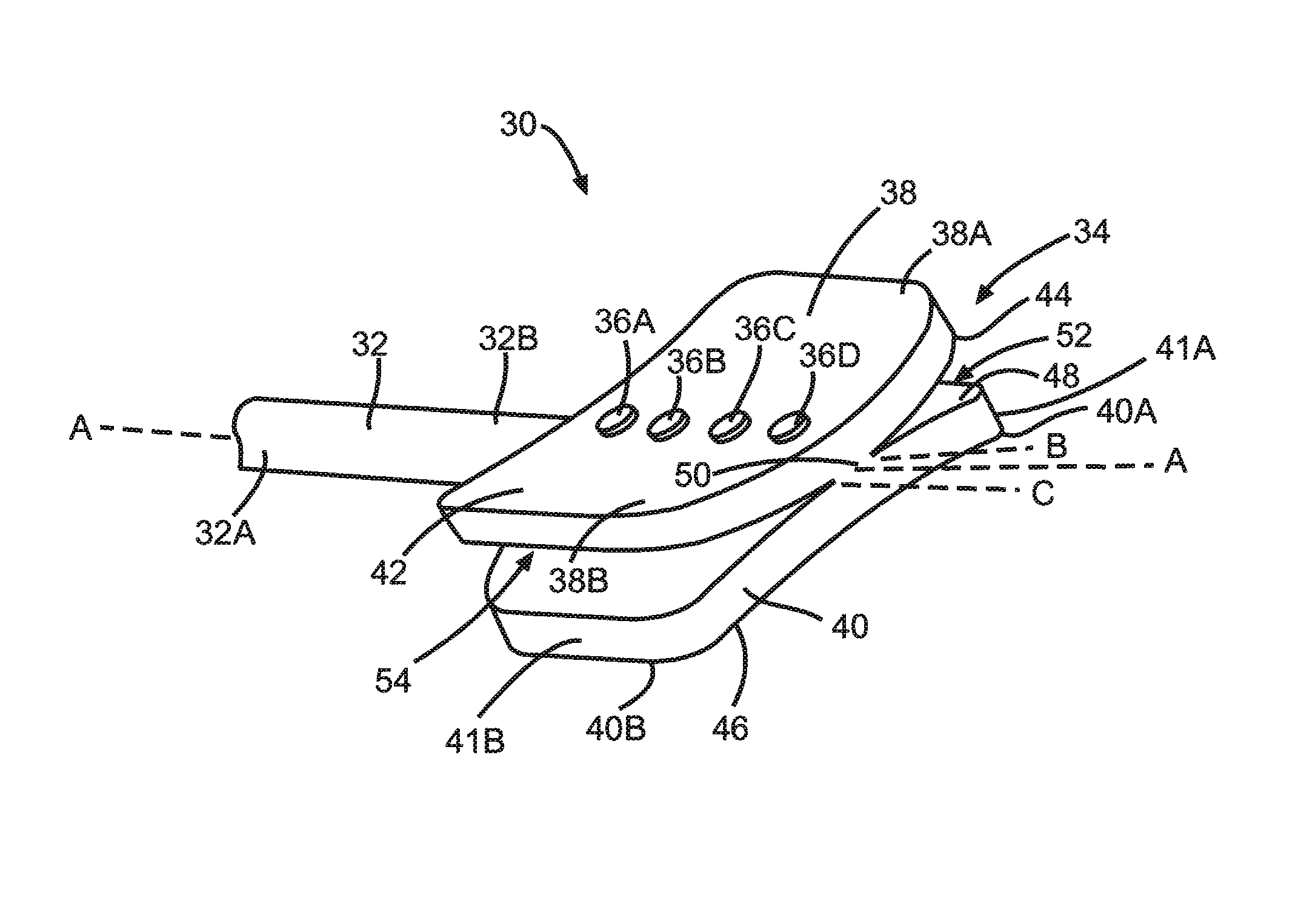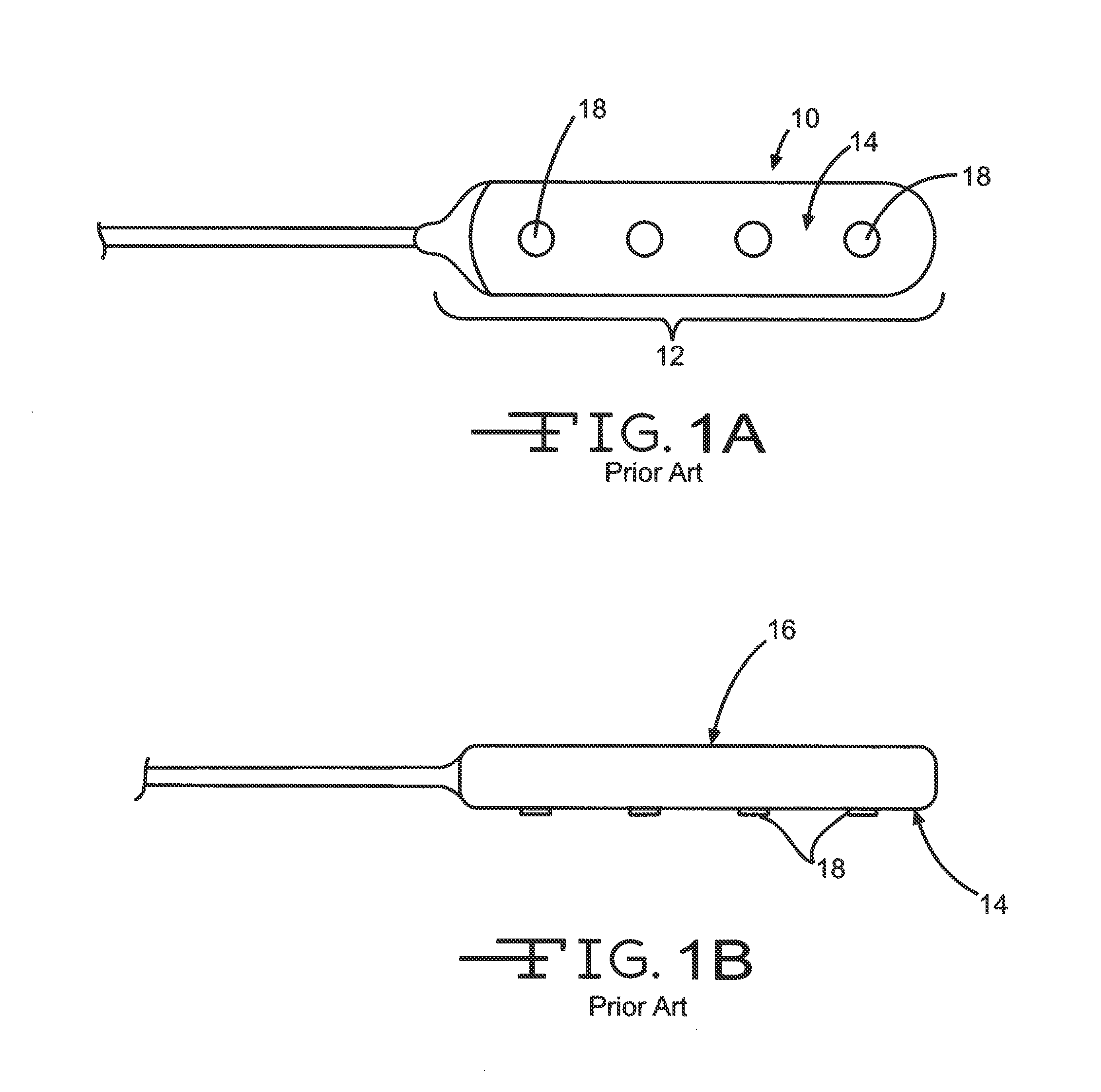Self fixing spinal cord stimulation paddle lead
a technology of spinal cord and paddle lead, which is applied in the field of implantable medical electrical leads, can solve the problems of difficult to stimulate the targeted neurological tissue in an energy-efficient manner, confined spaces of the spinal column, and many problems that have yet to be optimized, so as to improve the directional control of the stimulation signal and increase the energy efficiency of the medical devi
- Summary
- Abstract
- Description
- Claims
- Application Information
AI Technical Summary
Benefits of technology
Problems solved by technology
Method used
Image
Examples
Embodiment Construction
[0028]FIGS. 1A and 1B show an example of a traditional prior art paddle lead 10. The distal end of the lead 12 has an extension that resembles a paddle. The distal extension is typically a rectangular body with a planar top surface 14 and a planar bottom surface 16. Electrodes 18 are embedded within the top surface 14. As previously mentioned, this lead design is not optimized to fit properly in the curved confines of the epidural space between the spinal column and the dura mater and, as such, does not provide an efficient means to direct electrical energy to stimulate the spinal cord. In addition, this lead design lacks an anchoring mechanism to prevent the distal end from migrating in the epidural space.
[0029]FIG. 2 illustrates an electrode 30 according to the present invention. Electrode 30 is comprised of a lead body 32 and a paddle body assembly 34. As FIG. 2 shows, the paddle body assembly 34 is attached to the distal region 32B of the lead body along a longitudinal axis A-A....
PUM
 Login to View More
Login to View More Abstract
Description
Claims
Application Information
 Login to View More
Login to View More - R&D
- Intellectual Property
- Life Sciences
- Materials
- Tech Scout
- Unparalleled Data Quality
- Higher Quality Content
- 60% Fewer Hallucinations
Browse by: Latest US Patents, China's latest patents, Technical Efficacy Thesaurus, Application Domain, Technology Topic, Popular Technical Reports.
© 2025 PatSnap. All rights reserved.Legal|Privacy policy|Modern Slavery Act Transparency Statement|Sitemap|About US| Contact US: help@patsnap.com



